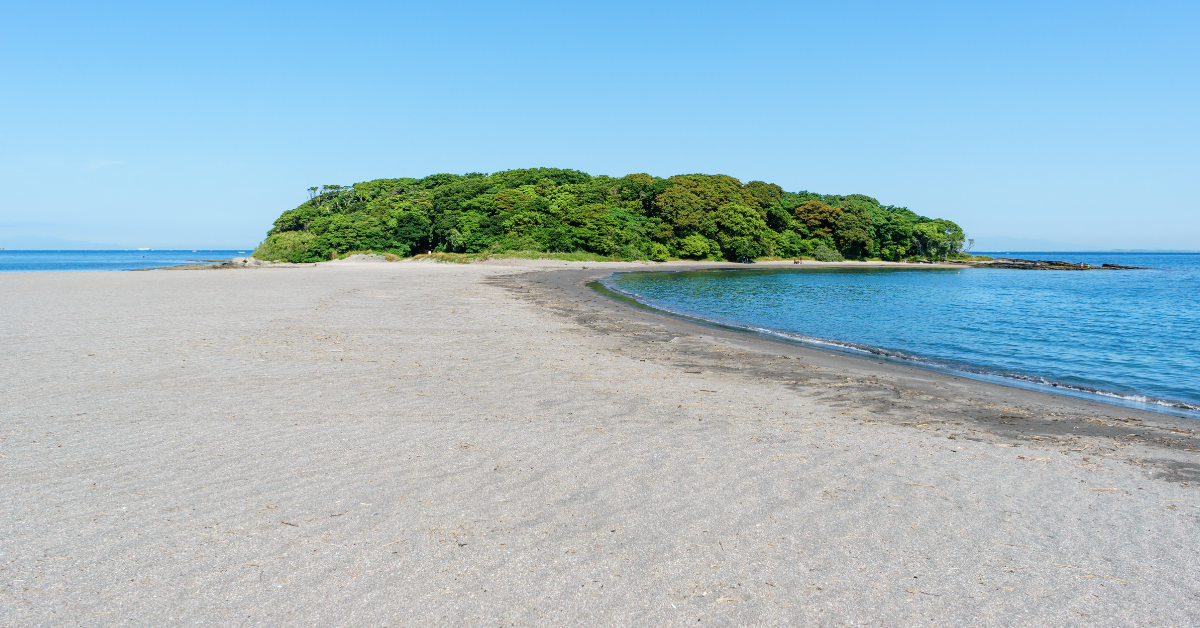The Sacred Island of Okinoshima and the Associated Sites of Munakata, registered as a UNESCO World Heritage site in 2017, embody mystery, pride, and harmony with nature in Japanese culture. This heritage is not just a historical site but a living spiritual tradition. For Japanese people, Okinoshima is revered as a divine island where faith and nature are inseparable, and understanding this perspective is the key for foreign visitors.
What is Okinoshima?
Okinoshima is a small island in the Genkai Sea, where the entire island is considered a deity. Between the 4th and 9th centuries, national rituals were performed there, and more than 80,000 ritual offerings from China and the Korean Peninsula were discovered. All of them are designated as National Treasures, earning the island the name “The Shōsōin of the Sea.” A unique feature of Okinoshima is the strict adherence to taboos: “Do not speak of what you saw or heard on the island” and “Do not take even a single branch or blade of grass.” These rules are still observed today, making Okinoshima known as a “divine island.” It is not a tourist destination but a sacred site that embodies faith and protection through prohibition.
| Feature | Description | Meaning Today |
|---|---|---|
| Sacred Body | The entire island is a deity | A sanctuary untouched by humans |
| Artifacts | About 80,000 items, all National Treasures | Evidence of ancient international exchange |
| Taboos | Nothing removed, nothing spoken | Symbol of mystery and protection |
Japanese Impressions and Feelings
Japanese impressions can be grouped into three main aspects. First is a sense of awe at its mystery—the restrictions create a feeling of something beyond human reach. Second is pride in history—the artifacts prove Japan’s ancient exchanges with the continent, serving as a source of national pride. Third is harmony between nature and faith—the untouched environment reflects the Japanese belief that divinity resides in nature itself.
| Impression | Specific Meaning | Japanese Expression |
|---|---|---|
| Mystery | Awe created by taboos and seclusion | “A presence beyond human reach” |
| Pride | Proof of ancient international exchange | “A proud part of Japanese history” |
| Harmony | Nature itself as a sacred being | “Faith in coexistence with nature” |
The Connection with Munakata Taisha
Okinoshima is not isolated but part of the faith system of Munakata Taisha’s three shrines. Hetsu-miya (on the mainland), Nakatsu-miya (on Oshima Island), and Okitsu-miya (on Okinoshima) enshrine the three Munakata goddesses. Together, they formed a spiritual network protecting sea routes between Japan and the continent. This structure shows how faith was integrated into ancient maritime culture.
| Shrine | Location | Deity Enshrined | Role |
|---|---|---|---|
| Hetsu-miya | Munakata City | Ichikishimahime-no-kami | Central shrine for many worshippers |
| Nakatsu-miya | Oshima Island | Tagitsuhime-no-kami | Connects island life with the sea |
| Okitsu-miya | Okinoshima | Tagorihime-no-kami | Center of strict rituals |
Perspectives Japanese People Want to Share with Foreigners
To explain this heritage to foreigners, Japanese impressions can be summarized in three keywords: Sacredness, Heritage Pride, and Harmony with Nature. These are not abstract concepts but are tied to everyday behaviors and rituals.
| Perspective | Explanation for Foreigners | Example of Action |
|---|---|---|
| Sacredness | The restriction itself proves faith | Worship from afar (遥拝) |
| Pride | Artifacts show international connections | Learn at museums |
| Harmony | Belief that nature and divinity are one | Quiet and respectful prayer |
Experiences and Etiquette on Site
Although Okinoshima itself cannot be visited, the associated sites offer ways to experience its significance. At shrines, visitors should avoid walking in the center of the approach, follow photography rules, and maintain a respectful silence. After visiting Hetsu-miya and Nakatsu-miya, worshippers often face the direction of Okinoshima to offer prayers, an act that helps them feel connected to the sacred island.
| Location | Experience | Etiquette |
|---|---|---|
| Hetsu-miya | Main hall worship, exhibitions | Avoid the center of the path, walk quietly |
| Nakatsu-miya | Shrine worship, island walk | Respect local life, keep noise down |
| Remote Worship Site | Pray toward Okinoshima | Short, silent prayer of gratitude |
Significance and the Future as a World Heritage Site
This heritage is not just a historical site but a model for preserving both faith and nature for the future. Unlike many tourist sites, Okinoshima emphasizes protection through non-access. Academic studies and cultural exchanges are growing, giving younger generations opportunities to learn the stories and wisdom connected to the site. While Japanese people are proud of its UNESCO designation, they place equal importance on not altering its original form. This cautious approach ensures its lasting value for the future.
| Significance | Japanese View | Message for Foreigners |
|---|---|---|
| Faith | A place inheriting ancestral prayers | Understand it as a spiritual experience |
| Protection | Preserved by limiting access | Restrictions are wisdom, not inconvenience |
| Future | Education and cultural succession | A global place of cultural exchange |
Conclusion
The Sacred Island of Okinoshima and the Associated Sites of Munakata embody mystery, pride, and harmony with nature. For foreigners, this heritage should not be approached as a tourist attraction but as a cultural and spiritual experience. Even without direct access to Okinoshima, the act of remote worship and visiting related sites offers a path to understanding Japanese spirituality. Seeing restrictions not as barriers but as methods of preservation is the key to grasping the essence of this World Heritage.






